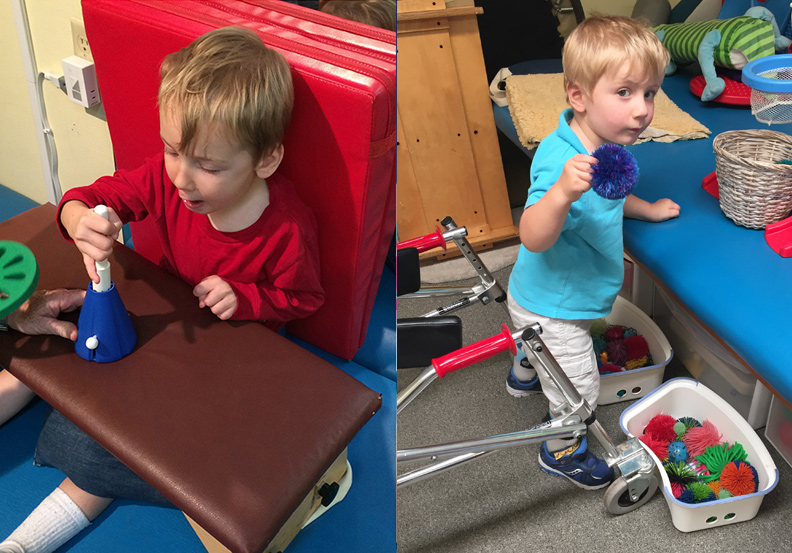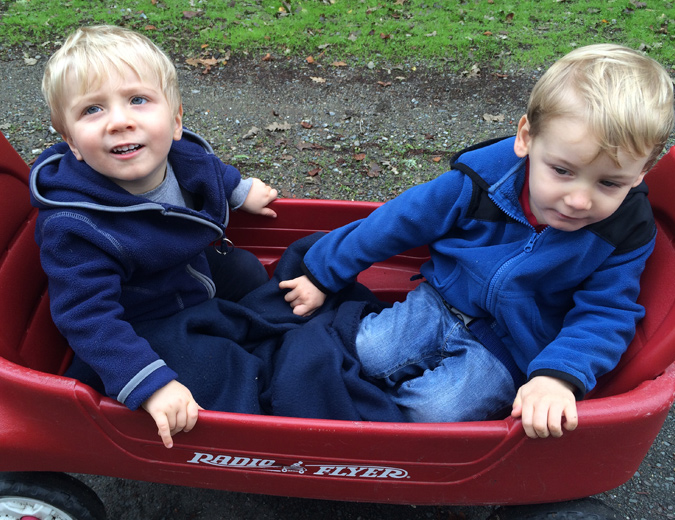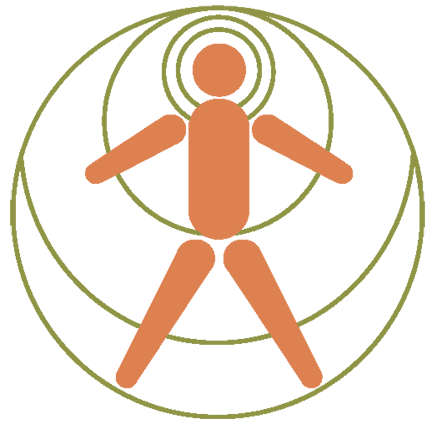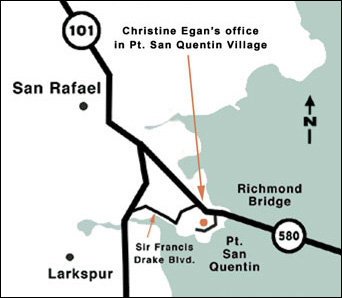Christine Egan Physical Therapy
Christine’s Pediatric Physical Therapy Blog
Danny Miller: Diagnosis Detective
Danny and Nikki Miller with Chase and Carson
In 2016 Danny Miller discovered The Undiagnosed Disease Network. It was a bright spot in his long search for answers regarding his sons’ undiagnosed condition. Learning from the Network that their children have a rare, neurodegenerative, genetic disease would shock most parents. But for Danny, finding out his sons Carson, eight years old, and Chase Miller, seven years old, had MEPAN Syndrome in February of 2018 provided some relief.
“Getting a diagnosis allowed us to know with certainty what we’re up against,” Danny said.
For years Danny had struggled to comprehend why his kids could not walk or speak. Knowing their children had MEPAN — while disheartening — allowed the Miller family to recalibrate their expectations for the future. This diagnosis also allowed them to connect with other MEPAN-affected families. Danny emphasized that families dealing with rare genetic diseases often feel isolated without a diagnosis. Receiving a diagnosis means entrance into a community.
“It was an opportunity to connect with some of those other families,” Danny said of his sons’ diagnoses, “and learn how they have managed life with MEPAN syndrome: their tips, tricks, medications, supplements — anything that we could do to help improve the quality of life for Carson and Chase.”
MEPAN Syndrome affects the basal ganglia: an area of the brain responsible for coordinating muscle movement. Most children with MEPAN cannot walk or speak properly, and are misdiagnosed with cerebral palsy, a more common condition. Carson and Chase were initially diagnosed with CP, and were referred to Christine Egan MPH, PT C/NDT for physical therapy in 2015. Carson was born with all the MEPAN red-flags, but it was not until Chase was born with the same issues did Danny question the Cerebral Palsy diagnosis.
“I think that there are probably other MEPAN patients that just haven’t had a diagnosis yet because they haven’t had genetic testing done,” Danny said. “So it could be CP or dystonia or juvenile Parkinson’s disease or even Parkinson’s. All the symptoms are similar.”
 Carson first met Christine, when his mother, Nikki Miller, brought him in for a consultation. Christine said he appeared to have a mixed type of quadriplegic cerebral palsy that affected his ability to control his posture and movement. She used a variety of modalities including Theratogs, SPIO garments, weighted vests and blankets, customized compression suits, TES, cage therapy and NDT treatment.
Carson first met Christine, when his mother, Nikki Miller, brought him in for a consultation. Christine said he appeared to have a mixed type of quadriplegic cerebral palsy that affected his ability to control his posture and movement. She used a variety of modalities including Theratogs, SPIO garments, weighted vests and blankets, customized compression suits, TES, cage therapy and NDT treatment.
A few months after starting treatment with Carson, Christine began seeing his brother, Chase. “At the start of treatment, my goal was to have Chase walk with an assistive device,” Christine said. She used similar, intensive regimes with both boys, but was unable to reach her projected motor goals. “Progress is often nonlinear when working with an individual with a neuromuscular disorder,” Christine said. “We often use the mantra, ‘one-step forward, two-steps back,’ as we slowly work toward our goals.”
The Miller’s were steadfast in their quest for both a diagnosis and the proper treatment of their son’s condition, and were open to any avenues of therapy that would help their boys. Christine observed that Carson and Chase were not making progress in therapy that one would expect, even from a static disorder like cerebral palsy.
Danny said he appreciated how Christine approached every child individually — she did not have a cookie-cutter method that she imposed on everyone.“She thinks about kids very holistically and takes in information from other modalities” Danny said.
Perhaps Christine’s greatest contribution to Carson and Chase’s well-being was teaching the concept of neural plasticity: that human brains are not static but that they can make or lose neural connections based on life experiences. “She turned us on to that realm of thinking,” Danny said of neural plasticity. “Through hard work and repetition and doing the right work, you can make a difference.”
Though MEPAN may not shorten Carson and Chase’s lives, the symptoms will likely worsen. Carson used to sit up in a chair on his own and could press buttons to communicate through an augmentative communication device (AAC). Today, Carson can no longer sit upright on his own and is losing control of his hands. Chase struggles against his ataxia to use an AAC as well.
“I don’t want anyone to give them a short shrift and to dismiss them,” Danny said. “They’re bright, fun, little boys who are just like other kids in so many ways — very typical aside from their ability to move and communicate.”
 Danny and Nikki help Carson and Chase practice their gross and fine motor skills, hoping to delay the disease’s progression as much as possible. If the disease follows its typical path, Danny said his sons could experience a loss of vision issues as they get older.
Danny and Nikki help Carson and Chase practice their gross and fine motor skills, hoping to delay the disease’s progression as much as possible. If the disease follows its typical path, Danny said his sons could experience a loss of vision issues as they get older.
“Thankfully, that hasn’t happened yet,” Danny said, “and I’d like to think it’s because we’ve been proactive about supplements and their diet.
Carson and Chase became the eighth and ninth individuals to receive a MEPAN diagnosis (19 documented cases exist today). While each rare genetic disease only afflicts a handful of people, 400 million people worldwide suffer from all these diseases combined, according to the Global Genes Group. Danny said as genetic testing becomes more robust, more people will be diagnosed with genetic diseases and more rare diseases will be identified. But research corporations usually neglect to study these diseases.
“It’s set up to help large profitable disease areas,” Danny said of the current research infrastructure. “Helping 10 to 40 patients isn’t profitable.”
Frustrated with this unethical system, Danny created the MEPAN Foundation in July 2018, which raises awareness for MEPAN Syndrome and funds MEPAN-specific research. The foundation has also connected the few researchers from around the world who have experience with MEPAN individuals. The foundation’s first sponsored research project — testing 2,000 FDA-approved drugs in a MEPAN model in yeast — is expected to begin at UCSF later in 2020. If a promising therapeutic drug is found, a clinical trial for Carson and Chase will begin.
“The pathway that’s involved with MEPAN Syndrome is what [scientists] call highly conserved, meaning it’s the same in yeast and flies and worms and fish and mice,” Danny said. “If it stays the same or pretty much the same over billions of years of evolution, it does some pretty important stuff.” Since the pathway is so conserved, scientists can more directly translate the results of model organism studies into potential treatments in humans.
At a rare disease conference, Danny met another MEPAN family in person for the first time. After Danny explained his foundation’s mission, the mother of the family told him, “I’m glad that I’ve met you because it’s got me excited for the future.”
“They just want to help their kids, like we do,” Danny said of the MEPAN families he has met. “They want to know if it’s possible to have their kids build a life without experiencing the loss of vision and having full use of their bodies. That would be a wonderful thing.”
Those sentiments continue to resonate with Danny.
“I’m sure that we are going to make things better for the boys,” Danny said. “I can’t tell you what that will look like but it’s going to be better than it is now.”
Read about the Millers’ odyssey in Stanford Magazine and on NPR’s website.



